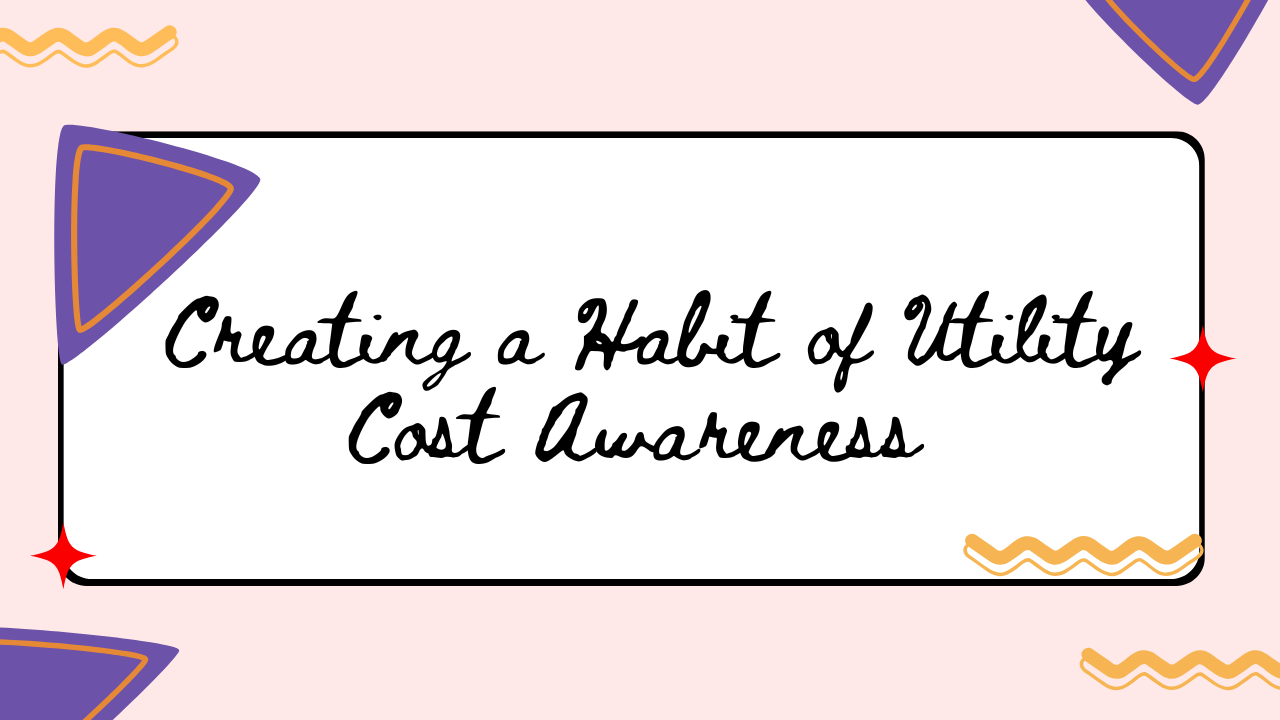Utility bills can easily become a major part of household expenses, but with a few simple changes, you can reduce these costs and increase savings. Whether it’s electricity, water, or heating, learning how to review and minimize utility costs can make a perceptible difference. In this guide, we’ll walk through the steps to examine your current expenses and offer practical ways to reduce them without compromising comfort or quality of life.
Table of Contents
- Why Review Utility Costs?
- Steps to Review and Track Utility Costs
- How to Minimize Electricity Costs
- Turn off lights when not in use
- Switch to energy-efficient lighting
- Unplug unused electronics
- Minimizing Water Usage
- Tips for saving water in the kitchen
- Water-saving habits for the bathroom
- Ways to reduce water use outdoors
- Reducing Heating and Cooling Costs
- Adjust your thermostat
- Insulate your home
- Tips for efficient HVAC use Tips for efficient HVAC use
- Creating a Habit of Utility Cost Awareness
Conclusion: Enjoy Lower Bills and a Greener Lifestyle
1. Why Review Utility Costs?
Utility costs like electricity, water, and heating add up fastly, especially if your household isn’t mindful of consumption. By regularly reviewing your utility costs, you gain insight into your usage patterns and find areas where you can save. Plus, reducing energy and water use benefits the environment, so cutting costs can have a positive impact on your wallet and the planet.
2. Steps to Review and Track Utility Costs 
The first step to minimizing utility costs is tp know where your money is going every month. Here’s a step-by-step way to review and track your expenses accurately:
- Gather Your Utility Bills: Start by collecting a few months of utility bills. This will help you to identify patterns and get an idea of your average usage.
- Use a Spreadsheet or Budgeting App: Track your monthly costs for each type of utility (electricity, water, gas) in a spreadsheet or budgeting app. This will make it easy to monitor any changes over time.
- Identify High-Usage Months: Look for months with higher-than-average costs and try to find what factors could have contributed. Seasonal changes, holiday lights, or extra guests at home can all impact utility bills.
- Calculate the Average Monthly Costs: Take an average of your utility bills to understand your typical spending. This will be useful for setting goals to reduce costs.
3. How to Minimize Electricity Costs?
Electricity costs often make up a lot of household utility expenses. Here are some effective ways to reduce electricity usage and save money:
Turn Off Lights When Not in Use
An effortless habit that can save you a lot in the long run is simply turning off lights in rooms that aren’t occupied. Consider using motion-sensor lights for areas like bathrooms or hallways to automate this process.
Switch to Energy-Efficient Lighting
Switching to LED or compact fluorescent light bulbs (CFLs) is a quick way to reduce electricity costs. These bulbs use up to 80% less energy than traditional burning bulbs and last longer, so you’ll replace them less frequently.
Unplug Unused Electronics
Many electronics continue to use electricity even when they’re turned off. Known as shadow power or standby power, this small but constant drain can add up over time. Unplug devices like phone chargers, laptops, and kitchen appliances when they’re not in use, or use a power strip to easily switch them all off at once.
Install Smart Plugs
Smart plugs can help you control electronics remotely, letting you ensure that lights or devices aren’t accidentally left on when you’re not home. You can set up schedules or turn devices off from your smartphone, adding convenience to your savings efforts.
4. Reducing Water Usage 4. Reducing Water Usage
Reducing water usage not only helps lower bills but also conserves a precious resource. Here are some ways to minimize water consumption at home:
Kitchen Tips for Saving Water
- Install a Low-Flow Faucet Aerator: A faucet aerator reduces the amount of water that flows out, which can save gallons over time.
- Fix Leaky Faucets and Pipes: Even a small leak can waste a surprising amount of water. Check your kitchen sink and dishwasher for leaks regularly.
- Use Your Dishwasher Efficiently: Only run the dishwasher with full loads, and consider air drying instead of heat drying to save both water and electricity.
Water-Saving Habits for the Bathroom
- Take Shorter Showers: Reducing shower time by even a few minutes can make a big difference. You can also install a low-flow showerhead to reduce water usage without sacrificing pressure.
- Turn Off the Tap While Brushing: This is a simple but effective habit. Turning off the water while brushing your teeth or washing your hands saves gallons of water each day.
- Install a Dual-Flush Toilet: Dual-flush toilets allow you to use less water for liquid waste and more for solid waste, helping to minimize water consumption.
Reducing Water Use Outdoors
- Water Lawns in the Morning or Evening: Watering during cooler times of day prevents water from evaporating quickly, making it more effective.
- Use Drought-Resistant Plants: Consider landscaping with plants that require less water to maintain. Native plants are often a good choice because they’re adapted to local conditions.
- Collect Rainwater for Gardening: Set up a rain barrel to collect water from your gutters and use it for watering plants. This is a cost-effective and eco-friendly way to reduce outdoor water usage.
5. Minimizing Heating and Cooling Costs
Heating and cooling costs alternate seasonally but often make up a significant portion of utility expenses. Here’s how to keep them down:
Adjust Your Thermostat
Lowering your thermostat by just a few degrees in winter or raising it in the summer can have a notable impact on your bill. Consider investing in a programmable or smart thermostat to automate temperature adjustments based on when you’re home or away.
Insulate Your Home
Proper insulation helps retain heat in the winter and keeps cool air in during the summer. Check windows, doors, and roof space for air leaks and add air sealing or insulation where needed.
Use Efficient HVAC Practices
Regular maintenance of your HVAC system, such as changing filters and checking ducts, ensures it operates efficiently. You can also use ceiling fans in co-occurrence with your HVAC system to improve air circulation and reduce the need for excessive heating or cooling.
6. Creating a Habit of Utility Cost Awareness 
To continuously keep your utility costs low, try making cost-saving a daily habit. Small actions, like always turning off lights when leaving a room or fixing leaks as soon as they’re noticed, become part of your routine and help build a more sustainable lifestyle.
Monitor Your Monthly Savings: Each month, compare your current utility bills with your baseline. Noticing a drop in your monthly expenses can motivate you to keep up with these good habits and inspire others in your household to do the same.
Conclusion: Enjoy Lower Bills and a eartheasy lifestyle
Learning how to review and minimize utility costs doesn’t have to be complicated. With simple, mindful actions like turning off lights, reducing water usage, and managing heating and cooling, you can significantly cut down on expenses. The result? Lower utility bills and a smaller environmental footprint.

